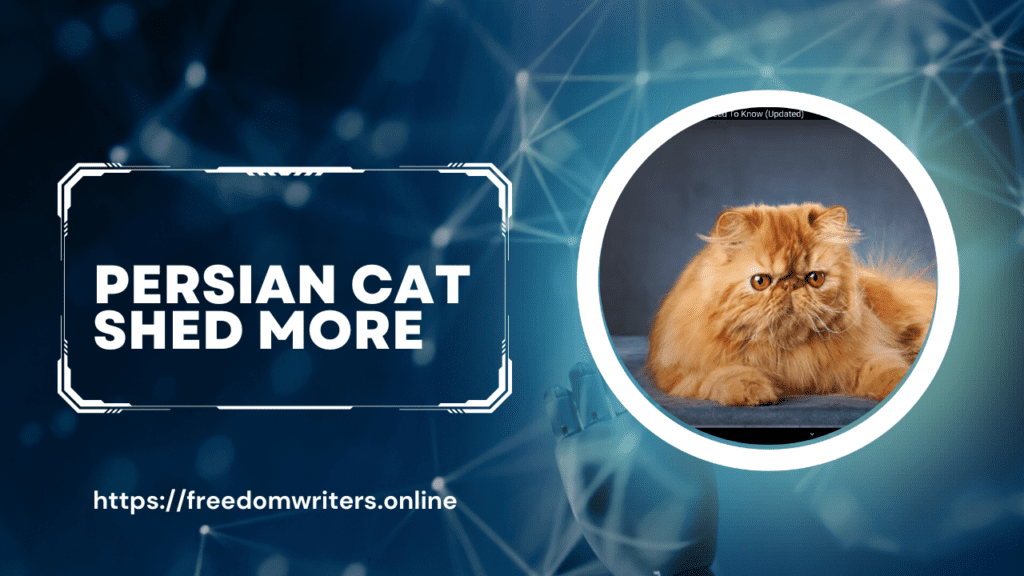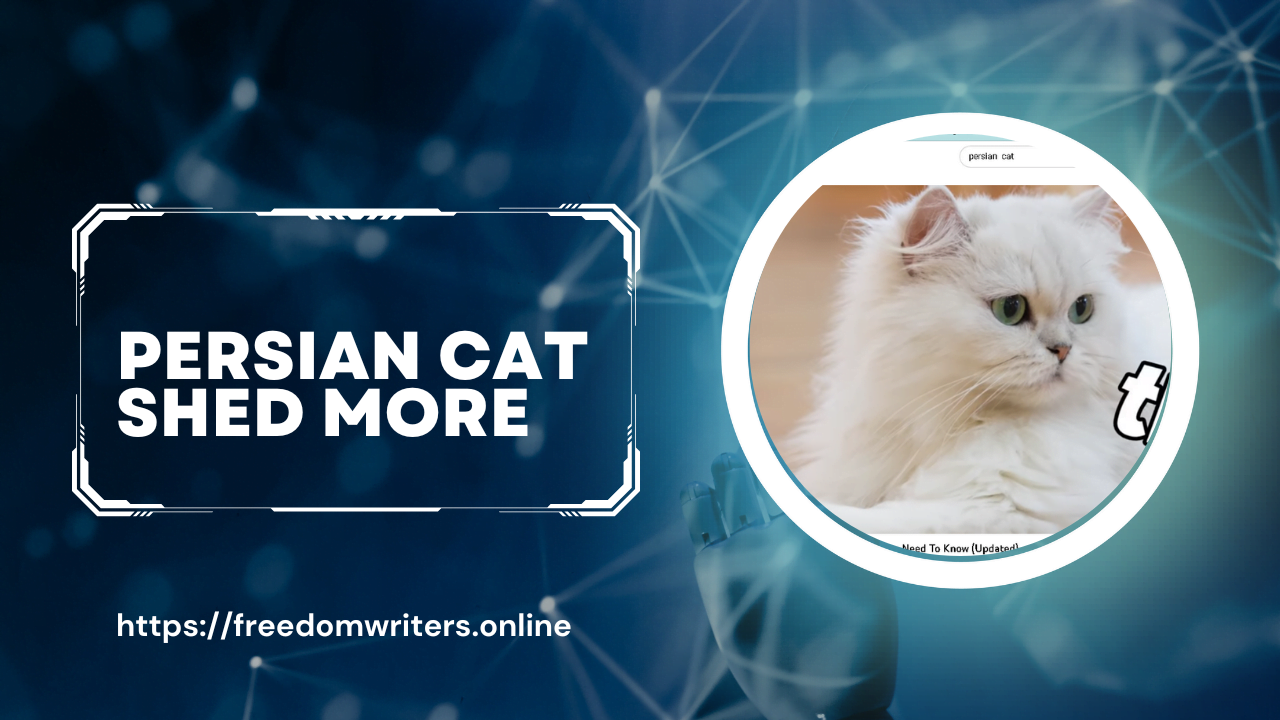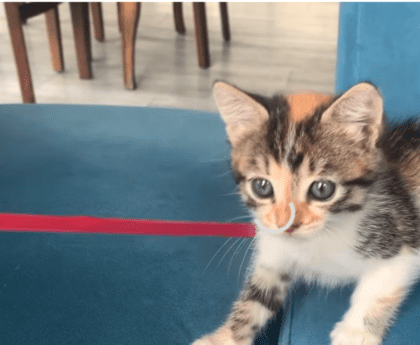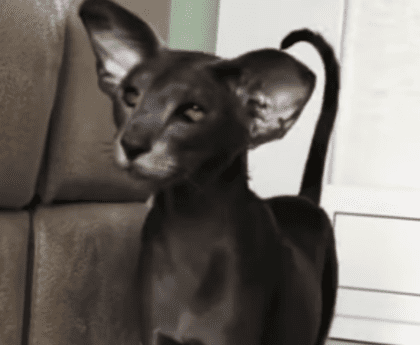- Do Persian Cats Shed More Than Most Cats? (The Furry Truth)
- Do Persian Cats Shed Excessively?
- Shedding Intensity and Seasonal Variations
- Managing Thick Fur, The Importance of Grooming
- Identifying Underlying Issues
- Regulating Persian Cat Shedding Through Diet
- Ensuring Proper Hydration
- Foods to Avoid
- Tips for Managing Persian Cat Shedding
- How Do I Get My Persian Cat to Shed Less?
- What Cat Sheds the Most?
- Why Is My Persian Shedding So Much?
- Conclusion
Do Persian Cats Shed More Than Most Cats? (The Furry Truth)
Persian cats are renowned for their luxurious, fluffy coats that captivate cat enthusiasts worldwide. However, beneath that striking appearance lies a furry challenge – excessive shedding. In this comprehensive guide, we delve into the world of Persian cat shedding, explore how to manage their high-maintenance coats, and identify the factors behind this furry conundrum. Plus, we offer valuable tips on regulating shedding through dietary adjustments and more.
Do Persian Cats Shed Excessively?
The short answer is yes. Persian cats are notorious for their luscious and thick fur, which sheds heavily. This can pose a considerable challenge for cat parents, especially those prone to allergies. Unlike hypoallergenic breeds, Persian cats can trigger allergies due to their shedding tendencies.
Shedding Intensity and Seasonal Variations
Persian cats exhibit a unique shedding pattern compared to most other breeds. They shed consistently throughout the year, but the intensity of shedding varies with the seasons. Twice annually, they undergo a complete coat change, requiring more frequent grooming during these periods.
Regular brushing is essential to remove excess hair and prevent the dispersion of dander, a common allergen found in cat fur. Maintaining a grooming routine, especially during these seasonal peaks, is crucial.
Managing Thick Fur, The Importance of Grooming
If your Persian cat’s fur becomes excessively thick and prone to matting, it’s advisable to seek professional grooming assistance. A skilled groomer can provide your feline friend with a stylish “lion cut,” where the body hair is trimmed while leaving the head, feet, and tail fluffy. However, avoid such drastic haircuts during the cold winter months to prevent your cat from catching a chill.


Identifying Underlying Issues
Excessive shedding in Persian cats may indicate underlying health concerns. If your furry companion experiences dramatic hair loss, consult a veterinarian to rule out the following issues:
Allergies
Persians are known for their sensitive tummies and susceptibility to food allergies. Avoid specific food groups like dairy products, eggs, grains, and cat food with artificial additives, as these can lead to skin irritation and hair loss.
Additionally, be vigilant for allergic reactions to medications or environmental factors, which may manifest as rashes, itchiness, bald spots, or even severe symptoms like breathing difficulties.
Hormonal Issues
Hyperthyroidism, common in older cats, can lead to excessive shedding. Look out for accompanying symptoms like weight loss, increased thirst, and frequent urination.
Stress
Stress and anxiety can cause hair loss in Persian cats. This usually results in patchy hair loss due to overgrooming. Signs of anxiety may include hiding, trembling, and ignoring the litter box. Creating a comfortable and stress-free environment for your feline friend can help alleviate these issues.
Parasites
Mites, ticks, fleas, and lice can irritate your cat’s skin, leading to excessive scratching and hair loss. Regularly use parasite prevention products and schedule vet check-ups if you notice any changes in your cat’s skin or fur.
Inadequate Grooming
Persians have high grooming needs due to their long, thick double-coat. Regular brushing with a wide-toothed comb, along with other grooming tasks like bathing, claw clipping, and eye and ear cleaning, is essential to prevent matting and tangling.
Low-Quality Cat Food
A poor-quality diet is a common culprit for excessive shedding. Persians need high-quality nutrients to maintain their coat health. Switching to a better diet can significantly improve their skin and coat condition.


Regulating Persian Cat Shedding Through Diet
While shedding is inevitable, you can control it to some extent through diet. Feeding your Persian cat a diet aligned with their natural eating habits is key. Persians no longer hunt in the wild, so they rely on lean meat and fish from the human supply chain to receive essential nutrients, including animal protein and animal fat.
Animal protein and fat play vital roles in strengthening hair growth, supporting organ function, and maintaining overall health. It’s essential to select protein sources with high biological values (BVs) to ensure efficient absorption of amino acids.
Ensuring Proper Hydration
Dehydration can lead to dry skin, which in turn results in dull and matted fur, eventually leading to hair loss. Persians tend to avoid drinking water, so it’s crucial to provide moisture through their food. Opt for wet cat food, which contains around 70% moisture, as the primary component of their diet.
Foods to Avoid
To prevent excessive shedding, steer clear of cat foods containing grains, cereals, and sugar, as these ingredients can lead to weight gain, diabetes, and overall coat and health issues. Additionally, avoid products with unspecified meat sources, as they can cause gastrointestinal problems and nutritional imbalances.
In conclusion, while Persian cats may present a shedding challenge, understanding the causes and taking proactive steps can help you manage their beautiful but high-maintenance coats effectively. By providing a proper diet, regular grooming, and addressing any underlying health issues, you can ensure that your Persian cat’s fur remains healthy, glossy, and a source of envy among cat enthusiasts.
You can Also Check Cats Breed
Tips for Managing Persian Cat Shedding
In addition to dietary adjustments and addressing underlying issues, here are some practical tips to keep your Persian cat’s shedding in check:
1. Regular Brushing
Make brushing your Persian cat’s coat a part of your routine. Use a wide-toothed comb to detangle and maintain their long, thick fur. Brushing not only removes loose hair but also helps distribute natural oils, keeping their coat healthy and shiny.
2. Bathing
While Persian cats may not need frequent baths, an occasional bath can help reduce shedding. Use a cat-friendly shampoo and ensure your feline friend is comfortable with the bathing process.
3. Claw Clipping
Trimming your cat’s claws not only prevents them from getting snagged in their fur but also reduces the risk of excessive scratching, which can lead to hair loss.
4. Eye and Ear Cleaning
Maintain proper eye and ear hygiene to prevent infections that might cause discomfort and excessive grooming, leading to hair loss.
5. Stress Management
Create a stress-free environment for your Persian cat by providing plenty of playtime, cuddles, and interactive toys. Reducing stress can help prevent overgrooming and associated hair loss.
6. Regular Vet Check-Ups
Schedule regular check-ups with your veterinarian to monitor your cat’s overall health. They can provide guidance on managing shedding and address any underlying medical issues promptly.
7. Supplements
Consult your vet about potential supplements that may benefit your Persian cat’s coat health. Omega-3 fatty acids and other supplements can help improve the quality of their fur.
8. Allergy Management
If you or your family members have allergies, consider allergy management strategies, such as using air purifiers and keeping your home clean and well-ventilated. This can help reduce allergens in the environment.
9. Quality Time
Spend quality time with your Persian cat. Engaging in activities like play and cuddling not only helps reduce stress but also strengthens your bond with your furry companion.

…………..-Google- People May Also Ask ……………
How Do I Get My Persian Cat to Shed Less?
Reducing shedding in your Persian cat can be achieved through the following strategies:
- Regular Grooming: Brush your Persian cat’s fur daily or several times a week to remove loose hair and prevent matting. Use a wide-toothed comb to detangle their dense coat. Grooming is the most effective way to manage shedding in Persian cats.
- Balanced Diet: Ensure your cat is fed a high-quality, balanced diet that includes essential nutrients like omega-3 fatty acids, which promote coat health. Consult your veterinarian for dietary recommendations.
- Hydration: Make sure your cat stays well-hydrated. Dry skin can contribute to shedding, so provide access to fresh water and consider incorporating wet cat food into their diet.
- Supplements: Consult your veterinarian about adding supplements, such as omega-3 fatty acids, to your cat’s diet. These supplements can help improve the quality of their coat.
- Stress Reduction: Create a calm and stress-free environment for your Persian cat. Provide plenty of playtime, affection, and a safe space where they can relax. Minimizing stress can reduce excessive grooming, which contributes to shedding.
- Regular Vet Visits: Schedule routine check-ups with your veterinarian to ensure your cat’s overall health. Addressing any underlying health issues can help manage shedding.
- Allergen Management: If allergies are a concern, use air purifiers, maintain a clean home, and consider allergen-reducing strategies to minimize reactions and excessive shedding.
What Cat Sheds the Most?
Among cat breeds, some are known for shedding more than others. While individual variation exists, the following breeds are often associated with heavy shedding:
- Persian Cats: Persian cats are known for their thick, long fur, and they tend to shed significantly. Their luxurious coats require diligent grooming to manage shedding effectively.
- Maine Coon Cats: Maine Coon cats are large and have a dense, water-repellent coat. While they shed year-round, they often experience heavier shedding in the spring and fall.
- Siamese Cats: Siamese cats have a short coat that sheds less than long-haired breeds. However, they can still shed noticeably, and regular grooming helps reduce shedding.
- Ragdoll Cats: Ragdoll cats have semi-long fur that requires regular grooming. They can shed moderately, especially during seasonal changes.
- British Shorthair Cats: These cats have dense, plush coats that shed to a moderate degree. Regular brushing can help manage shedding.
Why Is My Persian Shedding So Much?
Several factors can contribute to excessive shedding in Persian cats:
- Breed-Specific Traits: Persian cats naturally have a dense double coat that is prone to shedding. Their long, thick fur is designed to keep them warm, but it also results in more noticeable shedding.
- Grooming Needs: Persian cats have high grooming needs due to their coat’s length and density. If grooming is neglected, their fur can become matted and contribute to more shedding.
- Dietary Factors: A poor diet lacking essential nutrients can lead to coat problems and increased shedding. Ensure your cat’s diet is nutritionally balanced and supports coat health.
- Health Issues: Underlying health conditions, such as allergies, hormonal imbalances, or skin problems, can lead to excessive shedding. Consult your veterinarian if you suspect any health issues.
- Stress and Anxiety: Stress can trigger excessive grooming, leading to more shedding. Creating a stress-free environment and providing mental stimulation can help reduce stress-related shedding.
- Seasonal Changes: Persian cats, like other breeds, may experience heavier shedding during seasonal transitions


Conclusion
While Persian cats may require extra care when it comes to managing shedding, their stunning appearance and affectionate nature make it all worthwhile. By understanding the causes of excessive shedding, providing the right diet, maintaining a grooming routine, and addressing underlying issues promptly, you can ensure that your Persian cat’s coat remains a source of pride and admiration.
Remember that every cat is unique, so it’s essential to tailor your care routine to your cat’s specific needs. With dedication and a little extra effort, you can enjoy the company of your Persian cat while keeping their coat healthy and beautiful.





